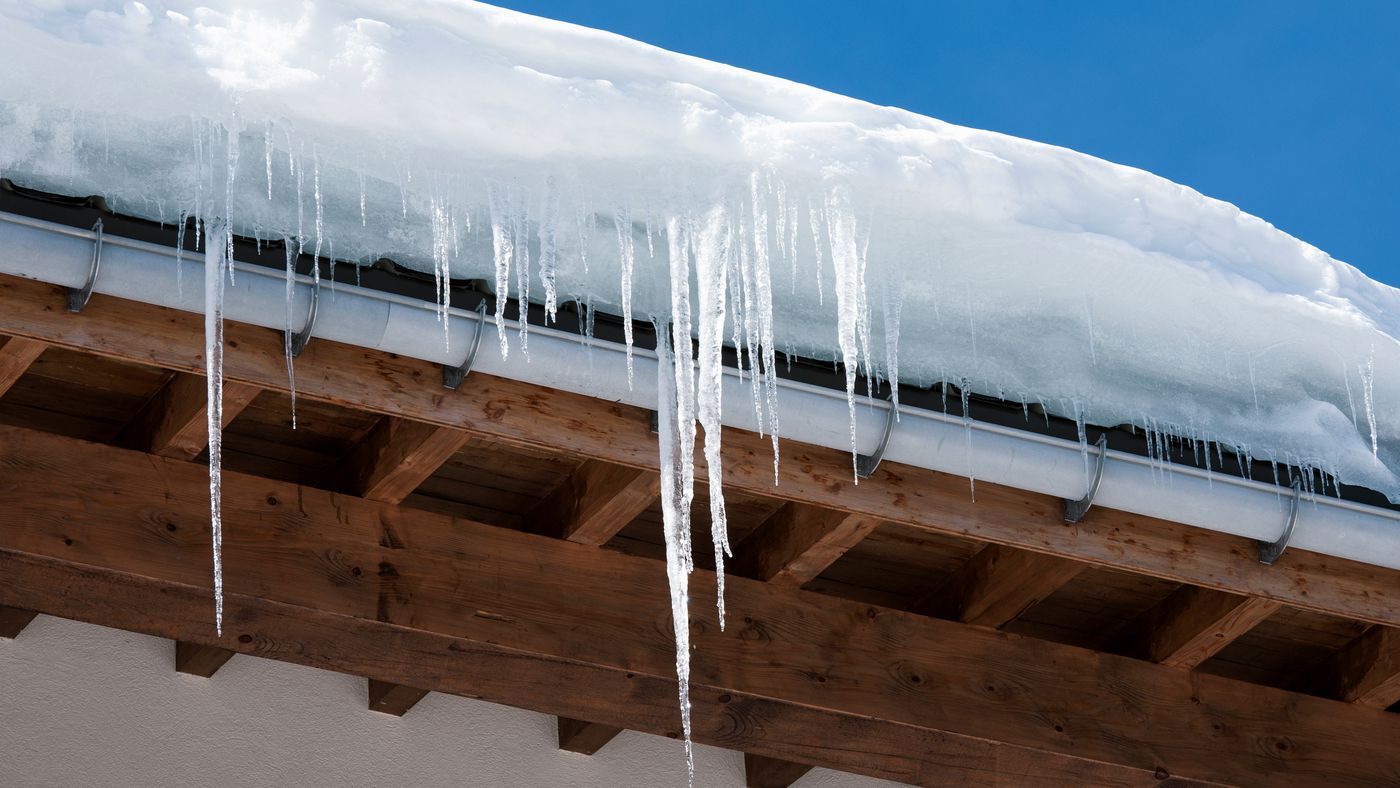It may be pushed back to the more glamorous aspects of attic ventilation home improvement, but that doesn’t mean it’s unimportant. Prevents mold growth both inside the dry, ventilated Attic Attic and in the living space below. Attic ventilation can cool the attic in the warm season and minimize ice dams in the cold season.
All Code Compliant Home Attics Already have some attic ventilation, but it’s always a good idea to extend your minimum ventilation requirements to keep your home in top condition for the long term.

What Attic Ventilation Does
Attic ventilation brings air into the attic and allows air to escape from the attic. Because the roof faces the sun, it accumulates considerable heat in the warm season. Attic ventilation provides an outlet for this heat gain and allows fresh air to enter the attic.
Attic ventilation also prevents moisture build-up in the cold season. Cold air cannot carry moisture as much as warm air. Thus, the cold attic air condenses the moisture in the air, making it ideal for insulation, rafters, joists, and roof deck floors.
With attic ventilation, ice along the dam roof edge is kept to a minimum.
What Is An Ice Dam?
An ice dam is a huge mass of ice that accumulates on the edge of the roof. When the attic or roof heats up, the ice or snow on the roof melts. This water is trapped above the ice dam. Water can run under shingles and leak into your home.

Relevant building materials last longer and work better due to attic ventilation. Attic ventilation maintains roof temperatures at sustainable levels because shingles and roof decks bend, bend, warp and crack when the attic gets too hot.
Ceiling drywall, joists, insulation and rafters benefit from attic ventilation because they remain dry.
Passive Versus Mechanical Attic Ventilation
Passive Attic Ventilation
Advantages
- No Running Cost
- Low Maintenance
- Vents Even In The Event Of A Power Outage
disadvantage
- Less Air Intake
- Less Air Leakage
- Out Of Control
Passive or natural attic ventilation is provided in the form of holes or slots in the roof, gable, eave, soffit or facade. This hole or slot can be used by birds or pests (eg bats ) from entering the attic. Passive attic ventilation types include roof ridges, shielded gable vents, roof turbines or eaves, soffit and fascia shielded vents.
Passive attic ventilation is easy to maintain as it requires no electricity and has no moving parts or motors. However, air movement is limited and often depends on climatic conditions.
Mechanical Attic Ventilation
Advantages
- Controllable
- Consistent Air Circulation
- It Moves More Air.
disadvantage
- Use Electricity
- Maintenance Required
- It Often Requires Professional Installation.
Mechanical or active attic ventilation is provided in the form of electrically operated fans built into the roof or gable. Types of mechanical attic ventilation include electric roof fans and gable fans. Electricity is supplied via solar panels that store and store energy in your home’s electrical system or battery.
Mechanical attic ventilation provides a consistent airflow that is not dependent on the operating wind or temperature. It can also move larger amounts of air than manual ventilation. However, mechanical attic ventilation usually requires professional installation. Mechanical ventilation systems operate frequently, so they fail over time and require maintenance and repair.
Ventilated Vs. Poorly Ventilated Attic
Well-ventilated attic
- Flat Shingles
- Roof Deck In Good Condition
- Clean Attic Insulation
- The Underside Of The Rafters, Joists And Roof Decks Are Clean And Mold Free.
- Dry All Over The Attic. No Condensation
- Few Or No Insects
- A/C Operating At Normal Capacity
- Few Or No Ice Dams
- Reasonable Summer Energy Rates
Poorly ventilated attic
- Buckle, Curl, Warped Shingles
- Roof Deck Plywood Peeling
- Mold In The Attic Insulation
- Mold Of Attic Structural Parts (Rafters, Joists, Etc.)
- Condensation On Rafters, Joists And Roof Decks
- More Insects
- Air Conditioner Working Too Much In Hot Months
- Ice Dam Accumulating Near The Eaves
- High Summer Energy Bills
Attic Ventilation Code Requirements
Building codes require ventilation of the attic. The International Residential Code (IRC) R806.1 specifies only a minimum value.
- Cross Ventilation Is Required In Closed Attic And Closed Rafter Spaces With Under-Rafter Ceilings.
- If The Attic Is Separated Or Partitioned (Such As A Wall), Each Separate Section Must Be Ventilated.
- Cross Ventilation Holes Must Be At Least 1/16 In. And No More Than 1/4 In.
- Openings Larger Than 1/4″ Should Be Covered With Wire Cloth, Perforated Vinyl, Or Other Shielding Material. The Hole In The Material Must Be At Least 1/16 Inch And No More Than 1/4 Inch.
- Vents Must Be Connected Directly To Outside Air.
- Roof Vents Must Comply With International Residential Code (IRC) R802.7, Which Specifies The Size And Type Of Openings.
How To Improve Attic Ventilation
Vents In The Eaves, Under The Eaves, And In The Fascia
All homes must have passive vents in the eave, soffit or fascia. Attic ventilation improvement starts here. Access the attic and check that there is no insulation covering these vents. Check for pest droppings or nests that could block the vents. Make sure the vent screen is securely attached. Secure the loosened vent screen in place.
Ridge Vent
Ridge vents are passive attic ventilation systems built into the upper ridge of the roof. A ridge vent is a long plastic or metal vent that runs along the length of a roof ridge (peak). These vents are covered with cover shingles to blend with the rest of the roof. Heat from the attic can escape through the ridge vents. Winds from any direction can flow into the attic.
Tip
The best time to install a roof ridge vent is when: Re-roof the house (or during initial construction), but ridge vents can still be installed retroactively.
Gable Vents
A gable vent is a passive ventilation device installed in the triangular section, the upper part of the gable of a house. A gable vent can be as simple as a large hole or slot covered with wire mesh. Alternatively, it could be a metal or plastic vent or louver that measures 1-2 feet square. Gable vents allow air to escape spontaneously from the attic to prevent moisture build-up.
Roof Turbine
The roof turbine is a large spherical rotating metal vent. It is classified as a passive attic ventilation device, but it is windy. When the wind catches the turbine’s vanes, the turbine rotates on ball bearings and pulls air out of the attic.
An actively rotating roof turbine can have a noticeable effect on attic ventilation. A stationary turbine will also release some air from the attic, but not as much as when the turbine is spinning.
Tip
The roof turbine must be vertical to rotate properly. To accommodate roof pitch, most roof turbines are adjustable for angled installation. After installation, the upper fan section is twisted until it is vertical.
Gable Attic Fan
A gable fan is a mechanical attic ventilation device installed behind a gable vent inside the attic. Gable fans do the full power of their ancestry. When initially turned on, it automatically turns on or off as needed based on temperature requirements.
Gable Attic Fans can move massive amounts of air up to 5,000 cubic feet per minute (CFM) in an attic. Most gable fans are rated in the 800-1,600 CFM range.
Tip
A whole house fan is not the same as an attic fan and does not have attic ventilation. Fans throughout the house draw air from the house into the attic. In fact, if you want to use a fan throughout the house, more attic ventilation.
Roof Attic Fan
A roof attic fan is a mechanical attic ventilation unit that draws between 1,000 and 1,500 CFM of air from the attic.
The roof fan uses a home 120V power source or solar power. Most roof fans, typically about 2 feet in diameter, hug the roof from a height of less than 10 inches. Some turbine fans are 24 inches tall, so a roof attic fan with a dish-shaped hood will not stand out. It can also be installed on sloping roofs.
Hiring Experts To Improve Attic Ventilation
Our experts can help you calculate the amount of ventilation you need based on the size of your attic and evaluate the type of attic ventilation you need. They will also have skilled technicians to implement a full line of attic ventilation units.
A general contractor can do this, but first check your qualifications for energy or ventilation-related project experience.
A full-service ventilation and insulation company is often the best option. The company handles projects ranging from crawl space and attic insulation to air ducts, vapor barriers, attic fans, gable vents and fans, and turbines. As with general contractors, ask questions and study the qualifications of a ventilation/insulation company. Not all companies cover the entire project scope.
With all mechanical ventilation, electrical power must be installed in the major attic. Electricity permits will also be required. Contact your roofing company to install roof ridge vents only.






